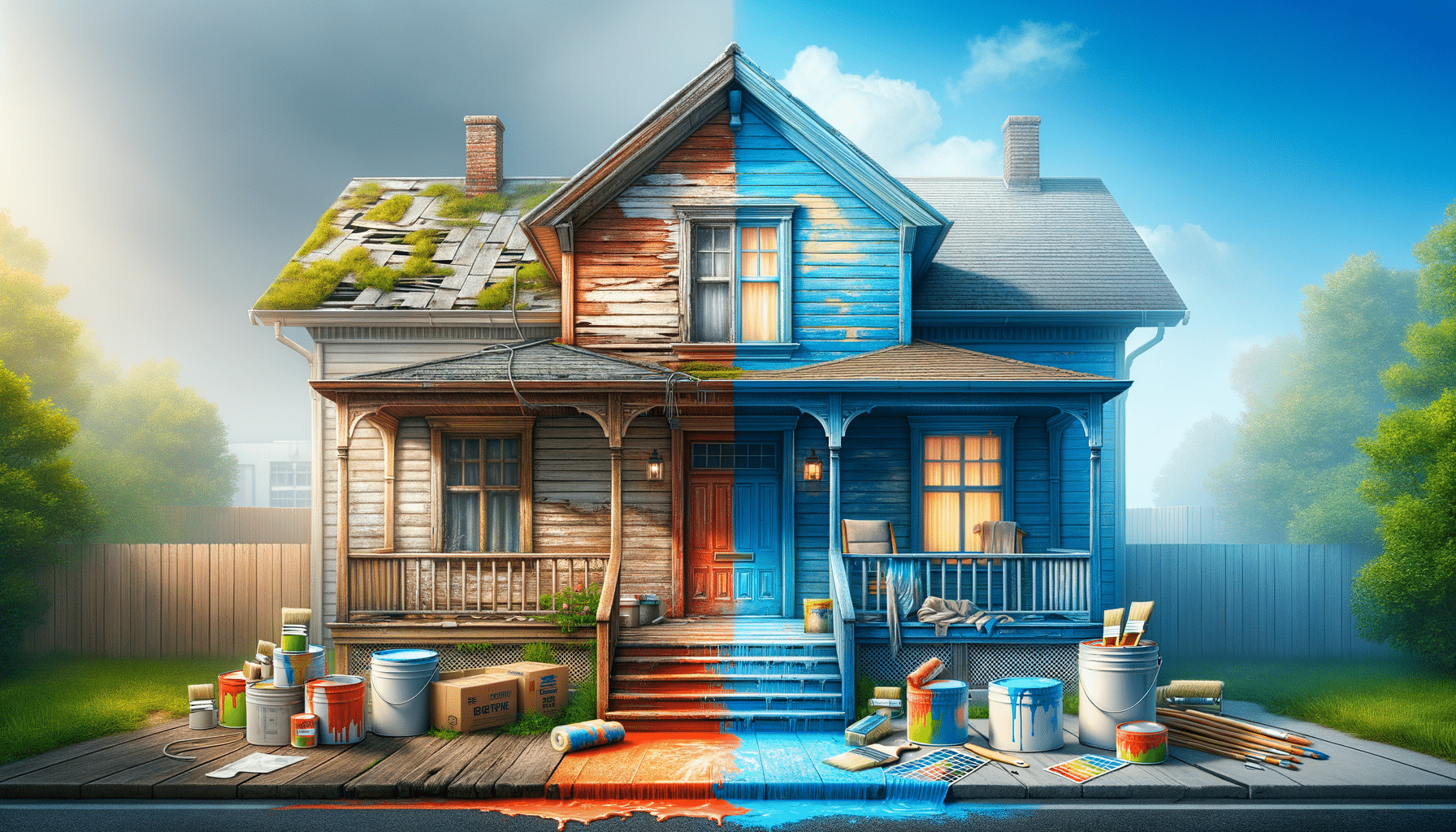
Transform Your Space with House Painting
The Art and Science of Choosing Colors
Choosing the right color for your home is both an art and a science. The colors you select can significantly influence the mood and perception of space in your home. For instance, lighter colors can make a room feel larger and more open, while darker shades can create a cozy and intimate atmosphere. When selecting colors, consider the natural light in the room, the existing decor, and the mood you want to evoke.
Color psychology plays a crucial role in house painting. For example, blue is often associated with calmness and serenity, making it a popular choice for bedrooms. On the other hand, yellow is linked to energy and happiness, which can be ideal for kitchens or living rooms. It’s essential to balance personal preference with the psychological impact of colors to create a harmonious environment.
Moreover, consider the architectural style of your home. Traditional homes might benefit from classic color palettes, while modern homes can experiment with bold and vibrant hues. Remember, the right house painting color can make a room feel taller, adding to the illusion of space and grandeur.
Preparing Your Home for Painting
Preparation is key to achieving a flawless paint job. Before you begin painting, it’s crucial to prepare the surfaces properly. This involves cleaning the walls to remove dirt and grease, which can prevent paint from adhering correctly. Sanding the walls can also help in creating a smooth surface for painting.
Next, inspect the walls for any cracks or holes. These should be filled with a suitable filler and sanded down once dry. This step ensures that the paint goes on smoothly and the finish is even. Additionally, using painter’s tape to protect trim, windows, and other areas not being painted is essential for clean lines and a professional look.
Don’t forget to cover furniture and floors with drop cloths to protect them from paint splatters. Proper ventilation is also necessary to ensure safety and comfort while painting. By taking the time to prepare your home, you can ensure a successful and long-lasting paint job.
Techniques for a Professional Finish
Achieving a professional finish when painting your home involves more than just applying paint to the walls. It requires the right techniques and tools. One of the most important aspects is selecting the right type of paintbrush or roller for your project. Brushes are ideal for detailed work and corners, while rollers are suitable for larger, flat surfaces.
When applying paint, use even strokes and maintain a wet edge to avoid lap marks. This technique ensures that the paint blends seamlessly, creating a smooth and uniform finish. Additionally, applying multiple thin coats rather than one thick coat can prevent drips and ensure better coverage.
For a flawless finish, consider using a primer before painting. Primers help to seal the surface, provide a uniform base, and improve paint adhesion. This is especially important when painting over dark colors or new drywall. Finally, patience is key. Allow adequate drying time between coats to achieve a durable and beautiful finish.
Exploring Different Paint Types
The type of paint you choose can have a significant impact on the final appearance and durability of your paint job. There are various types of paint available, each with its own set of benefits and applications. For interior walls, latex or acrylic paints are commonly used due to their ease of application and quick drying time.
Oil-based paints, although less common for interiors, offer a durable finish and are ideal for high-traffic areas or surfaces that require frequent cleaning. However, they take longer to dry and have a stronger odor compared to water-based paints. For exterior surfaces, consider paints that are specifically formulated to withstand weather conditions and UV exposure.
Additionally, consider the finish of the paint. Flat or matte finishes are excellent for hiding imperfections, while satin or eggshell finishes offer a slight sheen and are easier to clean. Glossy finishes are highly durable and are often used for trim and doors. Understanding the different paint types and finishes allows you to make informed decisions that align with your needs and preferences.
Maintaining Your Painted Surfaces
Once your home is beautifully painted, maintaining the painted surfaces is essential to preserve their appearance and longevity. Regular cleaning is important, especially in high-traffic areas. Use a soft cloth or sponge with mild detergent to clean the walls and avoid abrasive materials that can damage the paint.
Inspect the walls periodically for any signs of wear or damage. Touching up small areas with leftover paint can prevent larger issues and keep the walls looking fresh. It’s also beneficial to keep the room well-ventilated to prevent moisture buildup, which can lead to mold and mildew.
Consider applying a protective coating, such as a clear varnish, to areas that are prone to stains or heavy use. This additional layer can make cleaning easier and enhance the durability of the paint. By taking these steps, you can ensure that your painted surfaces remain vibrant and beautiful for years to come.


